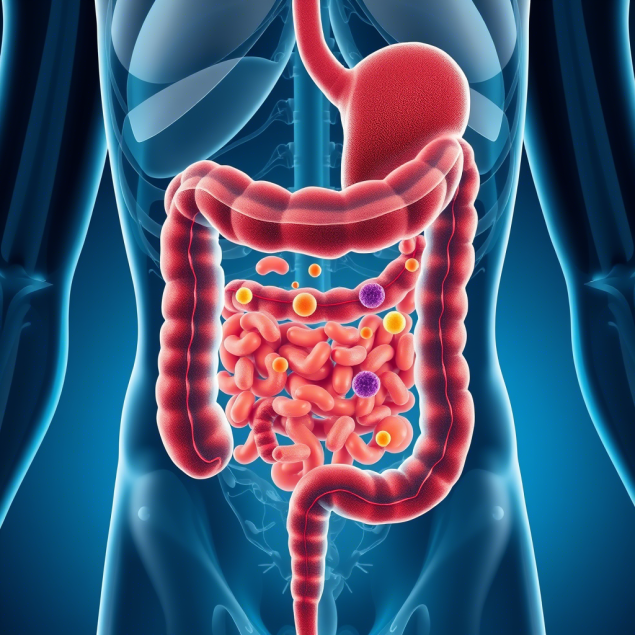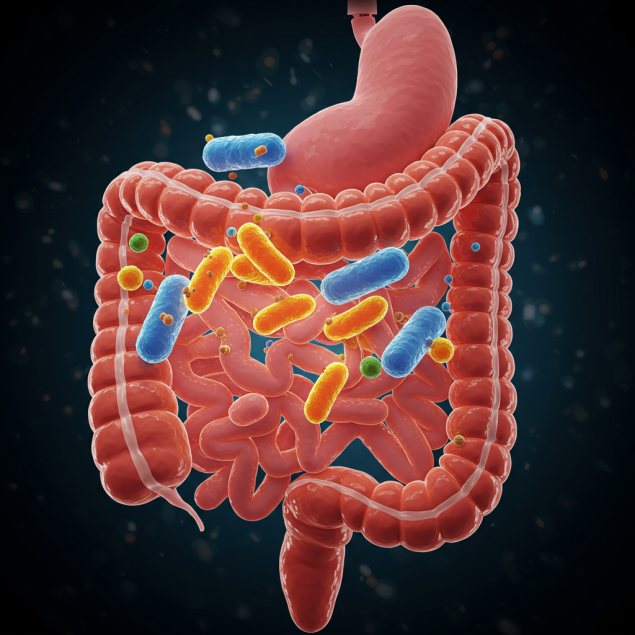290
What is Food Sensitivity and Why is it Important to Know It?

Food sensitivity is a complex of reactions to certain foods. It can manifest itself like an allergy, but is a completely different mechanism of interaction of the body with food. Unlike classic allergies, food sensitivities have delayed reactions and complex diagnosis. According to the World Health Organization, 15% to 20% of the population in developed countries suffer from various forms of food sensitivity, with more than half of cases going undiagnosed.
For many years, chronic fatigue, skin problems or digestive system problems are attributed to stress or age, unaware that the cause may be lurking in the plate. Timely detection of food sensitivity can radically improve the quality of life.
Food Susceptibility vs. Food Allergy: What’s the Difference?
It is important to understand that food sensitivities and food allergies are different conditions that require different approaches to diagnosis and treatment.
- Response mechanism: Food allergy is an immune-mediated reaction of the body involving the production of immunoglobulin E (IgE), whereas food sensitivity may be associated with immunoglobulins G (IgG) or have no immune component at all.
- Speed of manifestation: The allergic reaction occurs quickly, usually within minutes or hours of consuming the allergen. The reaction in food sensitivity can develop gradually, manifesting itself in a few hours or even days.
- Intensity: Allergies often cause acute and potentially life-threatening reactions (anaphylaxis), while food sensitivities usually manifest as chronic, less pronounced, but persistent symptoms.
1. Lactose intolerance
The most common type of food sensitivity is lactose intolerance, associated with a lack of the lactase enzyme, which breaks down milk sugar. According to studies, about 65% of the world’s population has some degree of lactose intolerance. Undiagnosed lactose intolerance can cause chronic intestinal discomfort and related psycho-emotional problems.
2. Gluten intolerance (celiac disease and gluten sensitivity)
Celiac disease is an autoimmune disease in which gluten consumption causes damage to the small intestine. A negative reaction to gluten without celiac disease is called gluten intolerance (Non-celiac gluten sensitivity). The journal Gastroenterology reports that gluten sensitivity without celiac disease is 6 times more common than celiac disease itself.
3. Histamine intolerance
In this condition, the body is not able to effectively break down and remove histamine contained in certain foods. The accumulation of histamine causes reactions resembling allergies, but not associated with immunoglobulin E.
4. FODMAP sensitivity
Sensitivity to fermentable oligo-, di-, monosaccharides and polyols (FODMAP) – a group of carbohydrates that are poorly absorbed in the small intestine. A change in diet taking into account FODMAP sensitivity shows improvement in 75% of patients with irritable bowel syndrome.

Symptoms of food sensitivity: why they are often missed
The insidiousness of food sensitivity lies in the variety and non-specificity of symptoms, as well as in their delayed nature. This makes it difficult to establish a link between eating certain foods and discomfort.
Common symptoms of food sensitivity:
- Gastrointestinal manifestations: bloating, diarrhea or constipation, nausea, abdominal pain or cramping
- Skin manifestations: eczema, acne, rash, itching
- Neurological manifestations: headaches, migraines, dizziness, problems with concentration
- Common symptoms: chronic fatigue, pain in joints and muscles, mood swings, sleep disorders
- Respiratory manifestations: nasal congestion, chronic cough, difficulty breathing
Research published in the journal Clinical Reviews in Allergy & Immunology shows that patients with intolerance to certain foods, on average, go to 5-7 specialists before receiving a correct diagnosis. This is because the symptoms of food sensitivity can mimic many other conditions.
Diagnosis: How to determine food sensitivity
Diagnosis of food sensitivity is a complex process that can include several methods:
1. Elimination diet
It is considered the gold standard in detecting food sensitivities. It implies the exclusion of potentially problematic foods from the diet for 2-4 weeks, followed by their gradual return to track the reaction of the body.
2. Laboratory tests
Tests for specific IgG food antibodies, genetic tests (such as for celiac disease), enzyme tests (such as lactase), and intestinal permeability tests can provide useful information. However, the results of these tests should be interpreted in the context of the clinical picture.
3. Food diary
Systematic recording of the foods consumed and the symptoms that arise can help identify the link between specific foods and the body’s responses.
Practical recommendations for maintaining a food diary:
- Write down everything you eat and drink, including supplements, condiments, and spices.
- Record the time of meals and the appearance of any unusual symptoms.
- Note the intensity of symptoms on a scale of 1 to 10.
- Keep a diary for at least 3-4 weeks to identify persistent patterns.
- Pay attention to factors that may increase symptoms (stress, physical activity, menstrual cycle).
How to Manage Food Sensitivity: Strategies and Approaches
After identifying products that cause negative reactions, you can develop an individual strategy for managing food sensitivity:
1. Dietary adaptation
For most people, eliminating problematic foods altogether is not necessary. Many can tolerate small amounts of such products or modified forms. For example, fermented dairy products are often better tolerated by people with lactose intolerance than fresh milk.
2. Rotational diet
This approach involves the use of potentially problematic foods with a certain frequency (for example, every 4-7 days), which can prevent the development of new types of sensitivity and diversify the diet.
3. Use of food enzymes
Special dietary supplements can help the body digest complex food components. For example, lactase preparations help with lactose intolerance, and protease enzymes can improve gluten tolerance in people with a negative reaction to gluten (but not with celiac disease).
4. Working on gut health
Recent studies convincingly prove the connection between the state of the intestinal microbiome and the development of food sensitivity. According to the journal Nature Medicine, restoring the balance of intestinal microflora can significantly improve the tolerability of previously problematic foods.

5 Steps to Improve Your Bowel Health:
- Regularly use prebiotics (artichokes, onions, garlic, banana, oats) to feed beneficial bacteria.
- Include in the diet fermented foods (sauerkraut, kimchi, natural yogurt) - sources of live probiotics.
- Increase the variety of plant foods – different plants contribute to the growth of different types of beneficial bacteria.
- Minimize the use of ultraprocessed foods, artificial sweeteners, and preservatives that can disrupt the balance of the microbiome.
- Manage stress – chronic stress negatively affects the composition of the intestinal microflora.
Nutritional sensitivity in children: features and approaches
Diagnosing and managing food sensitivity in children is particularly challenging. Toddlers can't clearly describe their feelings, and teens often hide symptoms. Pediatricians note that unresolved food sensitivities in children can manifest themselves in the form of behavioral problems, impaired concentration and even learning difficulties.
The journal Pediatrics published a study showing that children with ADHD (attention deficit hyperactivity disorder) had a 70% higher frequency of food sensitivity than those in the control group. In some cases, the exclusion of problematic foods led to a significant improvement in symptoms.
Important: Any severe restrictions on children’s diets should only be carried out under the supervision of a qualified dietitian or pediatrician to avoid deficiencies in the nutrients needed for growth and development.
The Future of Diagnosing and Treating Food Sensitivity
Scientific research in the field of food sensitivity is actively developing. Advanced technologies open up new opportunities to understand and manage these conditions:
- Personalized nutrigenomics Selection of diet based on the genetic profile and metabolic characteristics of each individual.
- Microbiome analysis study of the composition of the intestinal microflora to identify bacterial patterns associated with food sensitivity.
- Inflammation biomarkers Development of more accurate tests to detect inflammatory reactions to food components.
- Immunotherapy methods of gradual addiction of the body to problematic products, similar to those used in classic allergies.
Food sensitivity is not just a fashionable concept, but a real physiological state that can significantly affect the quality of life. Understanding your reactions to food allows you to create an optimal diet that supports health and wellness.
It is important to remember that food sensitivities are often individual and can change over time under the influence of various factors: stress, hormonal changes, the state of the microbiome and even seasonal features. Regularly reviewing and adapting your diet based on body signals is a path to long-term health for the digestive system and the body as a whole.
If you suspect the presence of food sensitivity, contact a qualified specialist - a gastroenterologist, allergist or nutritionist-nutriciologist. Self-diagnosis and self-medication can lead to unreasonable dietary restrictions and potential deficiencies in important nutrients.
Glossary of terms
allergen
A substance that can cause an allergic reaction in predisposed persons.
Anaphylaxis
Severe, potentially life-threatening allergic reaction of immediate type.
gluten
A group of proteins contained in cereals (wheat, rye, barley).
Immunoglobulin E (IgE)
An antibody involved in immediate allergic reactions.
Immunoglobulin G (IgG)
An antibody that can participate in delayed-type food sensitivity reactions.
lactase
An enzyme that breaks down milk sugar (lactose) in the small intestine.
microbiome
The set of microorganisms (bacteria, viruses, fungi) inhabiting a certain environment, for example, the human intestine.
Prebiotics
Indigestible food components that selectively stimulate the growth and/or activity of beneficial intestinal microflora.
Probiotics
Live microorganisms that, when consumed in adequate amounts, have a positive effect on the health of the host.
Increased intestinal permeability syndrome
A condition in which the barrier function of the intestine is disrupted, allowing undigested food particles and toxins to enter the bloodstream.
Celiac disease
Autoimmune disease characterized by damage to the mucous membrane of the small intestine when consuming gluten.
Elimination diet
A diet that excludes certain foods or food groups to detect food sensitivities.
FODMAP
Fermented oligo-, di-, monosaccharides and polyols are a group of carbohydrates that are poorly absorbed in the small intestine and can cause symptoms in people with sensitive intestines.























